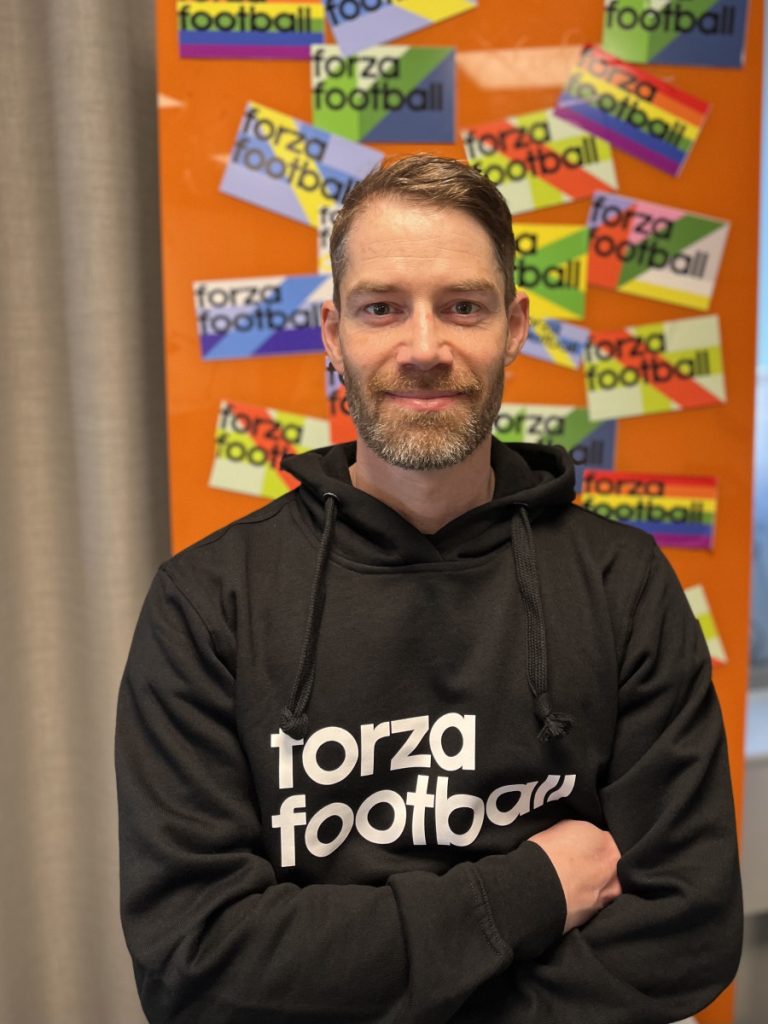Improved data and coverage could be crucial in fostering equality and the growth of women’s football, according to Jonas Linné, CEO of Forza Football.
Speaking with Insider Sport, Linné discussed tensions between the Lionesses and the FA in the buildup to the tournament and why the English football’s governing body missed a significant opportunity between the men’s and women’s game.
Insider Sport – How big a blow is it to the progress of Women’s football that the Lionesses have been denied a performance-based bonus at the World Cup?
Jonas Linné – The denial of bonuses for the Lionesses is a devastating blow to women’s football, primarily because it shows that the FA does not appreciate the sport as equally as the men’s. Bearing in mind that Gareth Southgate’s men’s team was promised £460,000 for winning the 2020 Euros, as well as £300,000 for reaching the final, the Lionesses (who won the Euros last year) were given £67,000 collectively, making it £2,000 each.
This year was the FA’s chance to close the gap between the two teams, but they passed on this opportunity. If Australia and the US can do it for their respective players, why can’t the UK? It’s about the message that it sends rather than the amount of money. The DFB (German Football Association) went down a similar path where they refused to award bonuses to their female players. Like the FA, they promised their men’s team £360,000 for each player if they won the Qatar World Cup.
There is greater disparity in pay at club level for female players in England. On average, players in the Women’s Super League earn up to £47,000 a year, which is a hundredth of the £2-3m male players in the Premier League earn on average. Currently, there is also an over £300m difference in prize money between the Women’s and Men’s World Cup. Nobody is expecting equal pay to happen in an instant, but organisations aiming for equality should make it their goal to make sure the gap is being closed constantly.
What is your assessment of the FA’s media strategy around women’s football and how can it be improved?

From what we’ve seen this year so far, the FA’s media strategy has not been meeting expectations. The FA recently lifted the social media ban for the Lionesses before the official commencement of the World Cup, but there are still some restrictions on using social media freely during the tournament.
While on the one hand, the players should be concentrating on their training and preparation for the matches, it significantly obstructs the players in terms of exposure and commercial growth of the sport. It affects their interactions with users online as well as fulfilling their sponsorship obligations – this could put off other brands from giving good deals to female players in the future.
The delays in reaching a decent deal for broadcasting rights among Europe’s Big 5 footballing nations, have also impacted women’s football negatively. With FIFA threatening to issue a media blackout, it made advertisers hesitant to invest their money into a tournament that might not air in Europe, therefore hindering players, teams, to secure their own commercial deals.
Partnership deals with FIFA were announced within two months of the World Cup starting, with Unilever and McDonald’s joining in May, and a TikTok collaboration declared a week before its official commencement. The various issues and delays around this year’s tournament demonstrate that there needs to be better planning and thought put into the media strategy.
How can football stakeholders better seize the commercial opportunities women’s football has presented in recent years?
The demographic of fans for women’s football across all age groups and gender is steadily rising, prompted by major tournaments such as the last World Cup and 2022 Euros, which attracted an audience of 300 million worldwide. There is enormous market potential for stakeholders to tap into, especially since many fans consider women’s football to be more inclusive, welcoming, and family-friendly than men’s football.
One thing that stakeholders can do is to allocate more resources and marketing efforts to build the sport’s profile and visibility to potential investors or advertisers, in turn creating more mutually beneficial opportunities for those involved.
Another would be to enhance media coverage of the games by working with news outlets or digital platforms to increase coverage of women’s football, thereby satiating the growing demand from fans, and attracting wider audiences. What’s important here is that stakeholders need to have a clear plan and show a long-term commitment to the development of women’s football.
Why is social media so crucial to elevating the growth of engagement in Women’s football and how can it be maximised at the World Cup?
Many women’s football fans prefer to follow the sport digitally, which means there needs to be sufficient data infrastructure to cater to demands. There is a significant amount of younger fans in the women’s football audience, who are very tech-savvy and familiar with social media which needs to be taken into account. Raising engagement through social media would open up doors to commercial opportunities for the players.
Following the Euros, the England Women’s team accumulated a collective Instagram following of 6.5 million followers, and captain of the team, Leah Williamson, receives 4 million in her sponsorship deals combined with her Arsenal salary.
The figures are nowhere near the men’s, with the Men’s team raking in 10 million followers on Instagram and Harry Kane making £22m from sponsorship deals and image copyrights. Social media has a crucial role in maximising exposure of the sport and players, and key strategies need to be adopted around the World Cup by football authorities to ensure that they are not missing out on these opportunities for promotion of the sport and its stars.
How significant a stage is the World Cup in building the next stars of Women’s football and ensuring that new generations continue to be impassioned by the sport?
There is consistent momentum being built in interest towards coverage of the sport.
In our recent in-app survey of 1,000 users on their opinions on the Women’s World Cup, we found that 77% said their interest has increased since the 2019 World Cup, and this figure rose to 82% among young people aged under 25. We also found that more than half of female football fans plan to miss work or school to watch the tournament.
With 32 teams participating instead of the 24 in previous years, it’s evident that this year’s World Cup pinpoints a landmark moment in women’s football. There is greater opportunity for exposure, media attention and investment than ever before, which needs to be recognised by businesses, investors and shareholders alike.
In 1999, things changed for the USWNT when they beat China on penalties in the final at the World Cup. Women’s football in the US wasn’t big at the time and they relied heavily on ticket sales, but after the US team’s victory, things started to pick up, and female football players were getting paid to play.
Fast forward to the present, the US is home to the National Women’s Soccer League (NWSL), the world’s most competitive women’s league and they have won half of all the Women’s World Cup held so far. Hopefully we’ll see this magic happen again at this summer’s tournament for the teams and inspire a new generation of players.
There was much made of the broadcasting rights to this Summer’s World Cup, why is it so vital that rights holders recognise the value of the Women’s game?
In the second opening match of the tournament where Ireland was playing against Australia, fans complained of the poor sound quality offered by RTE which affected the overall coverage of the game. This was disappointing to see in light of the delayed deals made over broadcasting rights, as it shows that there is still a lack of planning and care around covering the tournament.
As TV broadcasting is still the one of the primary ways to stream matches live, rights holders need to realise that they hold the power in retaining existing viewership and acquiring new audiences. After the broadcasting rights debacle, women’s football deserve respite from further disruptions which may hamper the reputation of the World Cup.
This year was also the first time that rights for the Women’s World Cup were being sold separately instead of being bundled together with the men’s. Rights holders should take the opportunity by acknowledging its value, especially noting the fact that this year’s tournament opened with record breaking attendances in Australia and New Zealand.
Is data under-utilised in women’s football? If so, how can it be better leveraged to strengthen the sport’s infrastructure?
Men’s football has seen an increased focus on data in the last decade in what could be called a “statistical revolution”. Fans have a much deeper understanding of data measuring all facets of the game, including advanced models such as xG. However, to collect all this data requires labour and infrastructure that can only come with increased coverage and money in the women’s game.
At Forza, we’ve covered over 50 women’s football competitions, and we learnt first hand that women’s football does not have the same large scale data infrastructure that we have come to expect in the men’s game. As coverage of women’s football increases and viewers increase, they will come to expect the same focus on statistics as in the men’s game which will hopefully lead to improvement in the infrastructure.
How significant is the all-women ITV panel of pundits and what does it tell about the growth of the women’s game?
ITV’s all-female presenting and punditry team is a step towards equality and parity in female participation. Equality can only come in football if there are equal opportunities across the sport and beyond the pitch. This means in management, officiating and coverage of the sport, referees, pundits and mascots to normalise women’s presence in football more generally. After the issues broadcasters in the UK had in covering the tournament, with rights only agreed a month before the tournament began, it is good to see that they are using the opportunity the tournament presents to champion women in football at all levels.
Baroness Karen Brady famously mentions that when she was first made Managing Director at Birmingham FC, she walked into the building and was directed to where ‘the wives’ sit as opposed to the Directors’ area.
For football to become an equal sport, it needs to stop being seen as a boys’ club – and this change needs to happen in all areas and at all levels of work and participation.























